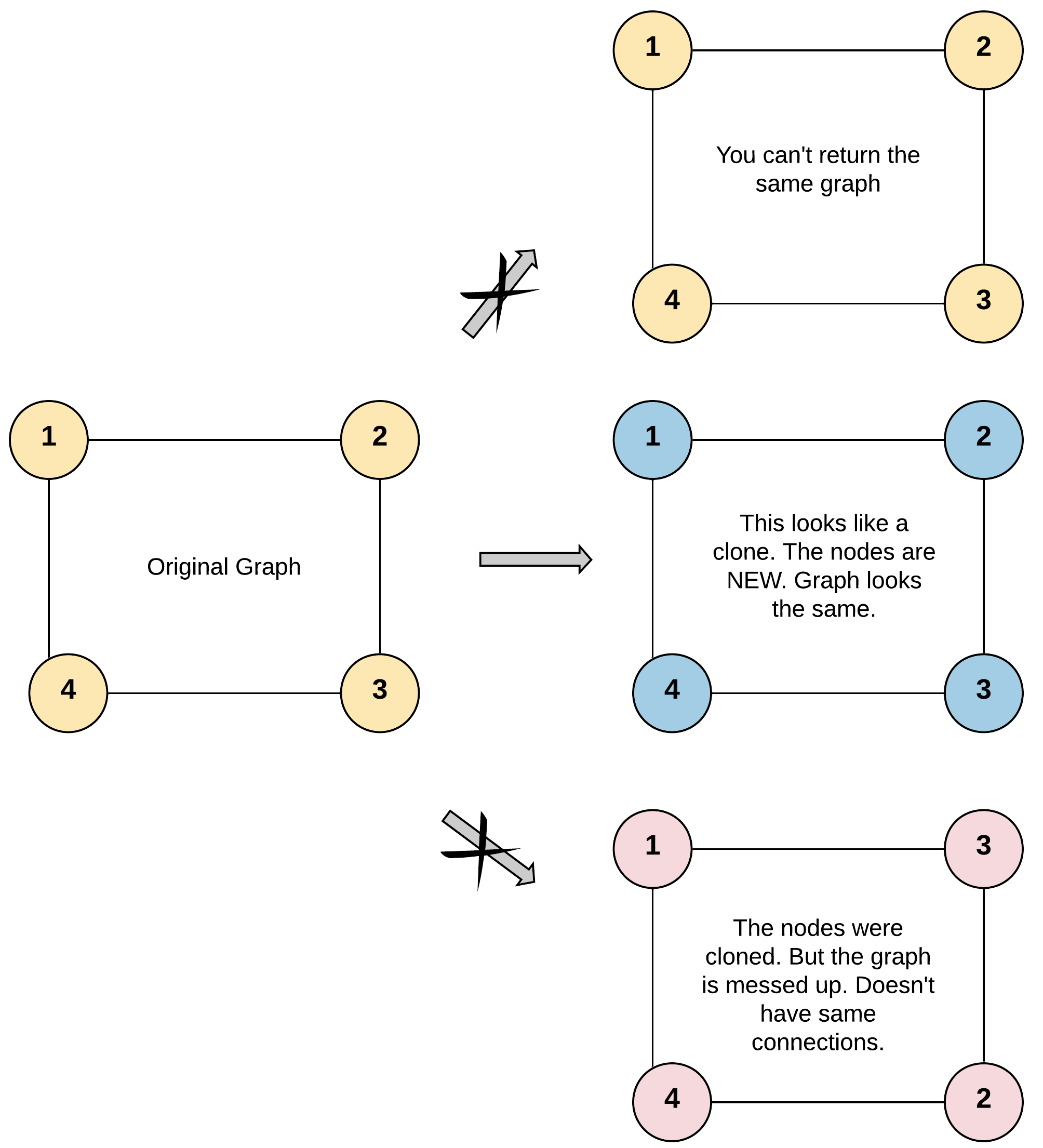133. Clone Graph - Medium
Given a reference of a node in a connected undirected graph.
Return a deep copy (clone) of the graph.
Each node in the graph contains a val (int) and a list (List[Node]) of its neighbors.
class Node {
public int val;
public List<Node> neighbors;
}
Test case format:
For simplicity sake, each node's value is the same as the node's index (1-indexed). For example, the first node with val = 1, the second node with val = 2, and so on. The graph is represented in the test case using an adjacency list.
Adjacency list is a collection of unordered lists used to represent a finite graph. Each list describes the set of neighbors of a node in the graph.
The given node will always be the first node with val = 1. You must return the copy of the given node as a reference to the cloned graph.
Example 1:

Input: adjList = [[2,4],[1,3],[2,4],[1,3]] Output: [[2,4],[1,3],[2,4],[1,3]] Explanation: There are 4 nodes in the graph. 1st node (val = 1)'s neighbors are 2nd node (val = 2) and 4th node (val = 4). 2nd node (val = 2)'s neighbors are 1st node (val = 1) and 3rd node (val = 3). 3rd node (val = 3)'s neighbors are 2nd node (val = 2) and 4th node (val = 4). 4th node (val = 4)'s neighbors are 1st node (val = 1) and 3rd node (val = 3).
Example 2:

Input: adjList = [[]] Output: [[]] Explanation: Note that the input contains one empty list. The graph consists of only one node with val = 1 and it does not have any neighbors.
Example 3:
Input: adjList = [] Output: [] Explanation: This an empty graph, it does not have any nodes.
Example 4:

Input: adjList = [[2],[1]] Output: [[2],[1]]
Constraints:
1 <= Node.val <= 100Node.valis unique for each node.- Number of Nodes will not exceed 100.
- There is no repeated edges and no self-loops in the graph.
- The Graph is connected and all nodes can be visited starting from the given node.
M1: BFS, time: O(V + E), space: O(V)
class Solution { public Node cloneGraph(Node node) { if(node == null) { return node; } Map<Node, Node> map = new HashMap<>(); map.put(node, new Node(node.val, new ArrayList<>())); Queue<Node> q = new LinkedList<>(); q.offer(node); while(!q.isEmpty()) { Node cur = q.poll(); for(Node nei : cur.neighbors) { if(!map.containsKey(nei)) { map.put(nei, new Node(nei.val, new ArrayList<>())); q.offer(nei); } map.get(cur).neighbors.add(map.get(nei)); } } return map.get(node); } }
M2: DFS, time: O(V + E), space: O(V)
class Solution { Map<Node, Node> map = new HashMap<>(); public Node cloneGraph(Node node) { return clone(node); } public Node clone(Node node) { if(node == null) { return null; } if(map.containsKey(node)) { return map.get(node); } Node newNode = new Node(node.val, new ArrayList<>()); map.put(node, newNode); for(Node nei : node.neighbors) { newNode.neighbors.add(clone(nei)); } return newNode; } }





 浙公网安备 33010602011771号
浙公网安备 33010602011771号